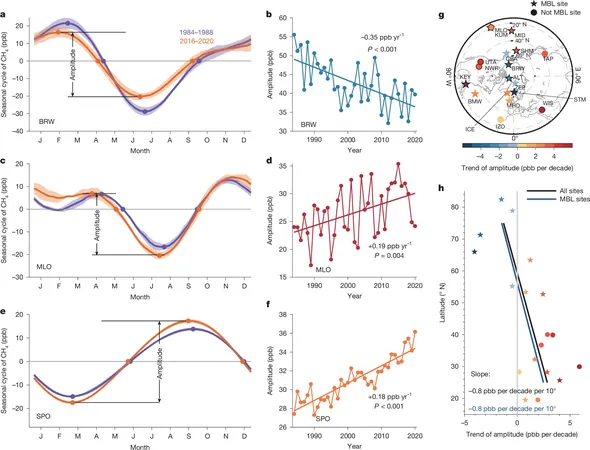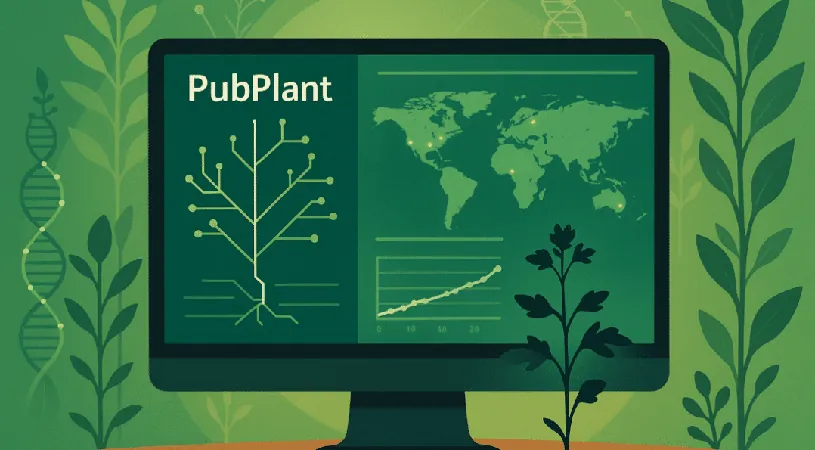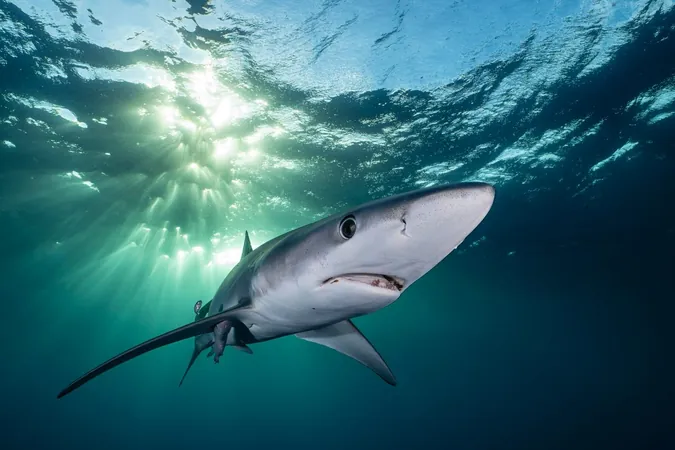
Arctic Warming: The Alarming Methane Feedback Loop Threatening Our Climate
2025-05-15
Author: Mei
The Arctic is warming at an alarming rate, unleashing a surge of methane emissions that could spell disaster for our climate. A groundbreaking study published in Nature reveals a troubling feedback loop driven by increasing temperatures and natural methane emissions.
Co-author Xin (Lindsay) Lan, a climate scientist from CU Boulder’s Cooperative Institute for Research in Environmental Sciences (CIRES), emphasizes the urgency: “Methane is a potent greenhouse gas that demands immediate action. Our findings indicate that much of the recent surge in atmospheric methane comes from natural sources spurred by climate change.”
The Power of Methane
Methane isn’t just any greenhouse gas; it’s the second most prevalent after carbon dioxide, but it packs a punch—trapping about 30 times more heat than CO2 over a century. Responsible for roughly a quarter of the Earth's warming since the Industrial Revolution, methane emissions have reached a critical tipping point.
Lan has dedicated the last decade to tracking methane levels in the atmosphere at NOAA’s Global Monitoring Laboratory in Boulder. Recent data shows an alarming rise in methane concentrations, with fossil fuel production responsible for 30% of global emissions. However, microbial sources are on the rise, prompting concern.
Microbial Menace: A Growing Threat
Specialized microbes, especially a group known as archaea, produce methane as they thrive in wetlands, landfills, and livestock digestion. Mirroring a crisis, microbial emissions now account for nearly half of global methane emissions, although the exact sources are still being investigated.
Lan insists that apart from long-term trends, we must analyze seasonal variations to pinpoint the changing dynamics of methane sources and atmospheric reactions. “Seasonal variations are crucial to unraveling this puzzle,” she stated.
A Vicious Cycle Unleashed
To delve deeper, Lan and her team scrutinized methane fluctuations over four decades. They found that the seasonal differences in methane levels have diminished significantly in northern latitudes, including the Arctic. Enhanced precipitation has expanded Arctic wetlands by 25%, creating optimal conditions for archaea.
The thawing permafrost is exacerbating this cycle, emitting even more methane and further accelerating global warming.
Racing Against Time
Despite warnings about climate feedback loops, their scale and speed are still murky. However, this new study presents compelling evidence that natural methane emissions are reacting to the warming climate faster than anticipated.
Lan draws a stark analogy to Earth's previous warming events that ended ice ages, striving to prevent catastrophic outcomes by reducing emissions swiftly. “Our urgency lies in averting severe climate feedback loops that could trigger disastrous events,” she noted.
Tracking Methane Removal
The study’s simulations also revealed a surprising increase in hydroxyl (OH) radicals—molecules adept at soaking up methane and other pollutants. These radicals are challenging to measure globally, leading scientists to potentially underestimate atmospheric methane removal.
“Our findings suggest that we’ve miscalculated how much methane the atmosphere removes, meaning emissions could be higher than we thought,” Lan warned.
The Path Forward
Identifying specific methane sources is critical for effective climate policy. Although microbial emissions dominate the current rise, methane from fossil fuel burning still plays a significant role.
With Earth's permafrost storing twice as much carbon as currently exists in the atmosphere, its thawing could lead to irreversible climate changes. “We must address this feedback loop before we reach an irreversible tipping point,” Lan concluded.





 Brasil (PT)
Brasil (PT)
 Canada (EN)
Canada (EN)
 Chile (ES)
Chile (ES)
 Česko (CS)
Česko (CS)
 대한민국 (KO)
대한민국 (KO)
 España (ES)
España (ES)
 France (FR)
France (FR)
 Hong Kong (EN)
Hong Kong (EN)
 Italia (IT)
Italia (IT)
 日本 (JA)
日本 (JA)
 Magyarország (HU)
Magyarország (HU)
 Norge (NO)
Norge (NO)
 Polska (PL)
Polska (PL)
 Schweiz (DE)
Schweiz (DE)
 Singapore (EN)
Singapore (EN)
 Sverige (SV)
Sverige (SV)
 Suomi (FI)
Suomi (FI)
 Türkiye (TR)
Türkiye (TR)
 الإمارات العربية المتحدة (AR)
الإمارات العربية المتحدة (AR)